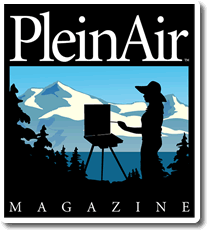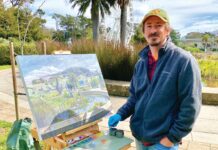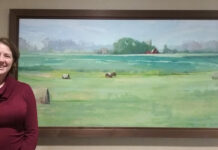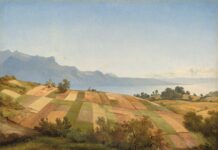What information and inspiration can you expect to receive from the demonstrators and speakers who will be part of the Plein Air Convention & Expo? Here are brief samples of the valuable insights they will share.
Some insights from the artists who’ll be part of the Plein Air Convention & Expo, set for April 10-14, 2013 in Monterey, California.
Scott L. Christensen: “Painting is all about placement of shapes.”
“When I first started painting, I did five or more studies every day to understand what happens in nature and to sharpen my ability to remember what I see,” Scott L. Christensen explains. And that work ethic is just one reason he is one of the most admired landscape painters in the world.
Christensen goes on, “I didn’t use a camera for five years because I wanted to learn directly from nature. I started all my paintings outdoors, even the large canvases, but now I can work from field studies, photographs, and my memory because I have a better sense of what I need to do.
“The beginning stages of the painting process are the most intense because I have to judge overall relationships, not individual sections or specific details. I’m not the kind of painter who can start working around the center of interest and then radiate out from there. Instead, I walk back and forth from the canvas to judge the important relationships between shapes, values, edges, and colors across the canvas, or I take a break and return to the studio when I can see the painting with a fresh eye.”
The procedures Christensen follows will vary depending on the subject he is painting and his evaluation of the impending challenges. “I usually make compositional sketches before picking up a paint brush, and then I pre-mix a lot of paint so I can paint without being sidetracked,” he explains. “I use a thin mixture of a light color to draw the outlines of the major shapes on the white canvas, and sometimes I will start painting with primary colors while at other times I block in the important shapes with neutral colors. In either case, I quickly get involved in adjusting the relative values and color temperatures and orchestrating the entire painting.
“I depend heavily on the neutral color mixtures, especially a dark brown neutral that can shift towards a warm or cool temperature depending on how I use it. The neutrals help me play down certain passages so that others will appear brighter, stronger, or more reflective of the sunlight. One of the hardest things to learn about painting is that everything hinges on relationships, and when you want one thing to appear brighter, another has to be subdued; when one shape has to stand out more distinctly, another may have to drop back into the shadows.
“Painting is all about placement — what one shape, color, or value looks like next to another; how each new element contributes to the success of the picture; and what parts need to be changed or taken out. After years of painting, I can make those judgments intuitively. Other people might look at one of my paintings in progress and think it’s finished, then the next day they come into the studio and see that I’ve revised big sections. In order to work to the highest level, I have to be willing to make those hard decisions and do whatever is required to make the painting successful.”
Making hard decisions has become more important to Christensen now than it might have been earlier in his career. “I spend less time painting and more time thinking, revising, waiting, looking, reading, revising again, and waiting some more,” he says. “There seems to be a direct correlation between experience and struggle. The more I know, the more critical I become. And the more paintings I create, the more challenging it becomes to paint at a higher level.”
For more information, register to attend the Plein Air Convention & Expo (www.pleinairconvention.com), and visit www.christensonstudio.com or www.christensenworkshops.com.




